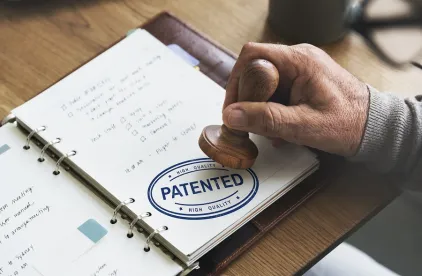In two opinions by the same panel concerning the same three patents, the US Court of Appeals for the Federal Circuit relied in part on post-priority evidence in affirming both the district court’s and the Patent Trial and Appeal Board’s (PTAB’s) holdings that claims directed to dosing regimens were obvious. Yeda Research & Dev. Co. v. Mylan Pharm. Inc., Case Nos. 17-1594, -1595, -1596 (Fed. Cir. Oct. 12, 2018) (Reyna, J); In re Copaxone Consol. Cases, Case No. 17-1575 (Fed. Cir. Oct. 12, 2018) (Reyna, J).
Yeda is the assignee (and Teva is the new drug application holder) of three patents concerning a dosing regimen for a prior art treatment for multiple sclerosis called Copaxone® (glatiramer acetate). The claims of the patents recite a method involving three subcutaneous injections of 40 mg of Copaxone over a period of seven days with at least one day in between each injection. The claims of the patents were found invalid by a district court during litigation and by the PTAB in an inter partesreview proceeding. Yeda appealed.
The Federal Circuit affirmed both the district court and the PTAB decisions. In finding the claims invalid, both tribunals noted that it was well known that subcutaneous administration of Copaxone caused significant and uncomfortable injection site reactions that led to patient non-compliance. The prior art already described two different dosing regimens: 20 mg daily and 40 mg every other day. Both regimens were understood to be equally effective (perhaps because the overall weekly total dose is almost identical for both regimens), but patient compliance was significantly better for the less frequent dosing regimen.
The district court and the PTAB both noted that the only difference between the prior art 40 mg dosing regimen and the claimed regimen was one dose over a two-week time span (i.e., seven doses over two weeks in the prior art versus six doses over two weeks pursuant to the claims). Given the general motivation in the art to administer Copaxone less frequently, and expert testimony that Copaxone is “a forgiving drug,” it would have been obvious to try to remove one dose from the prior art regimen to arrive at the claimed regimen. Moreover, expert testimony indicated that a regimen of injections on pre-determined days of the week has better patient adherence than an every-other-day regimen, in which the particular injection days differ from week to week. Citing KSR, both tribunals noted that the “small field” of prior art “presented a finite and known pool of dose and frequency options easily traversed to show obviousness,” and that the universe of dosages and frequencies “represent[s] a limited number of discrete permutations.” The district court further explained that “the prior art . . . provided clear direction as to choices likely to be successful in reducing adverse side effects and increasing patient compliance.” The Federal Circuit found no error in the district court and the PTAB’s findings.
In finding obviousness, both tribunals also relied, in part, on a non-prior-art publication (Khan 2009) that was published three weeks after the priority date. Noting that the study reflected in Khan 2009 was commenced two years earlier, the district court and the PTAB both agreed that Khan 2009 was admissible “for the limited purpose of showing the state of the art at the time of the invention.” Crucially, the Khan 2009 study discussed the motivation in the art to reduce dosing frequency to improve patient compliance and suggested that alternate day administration of Copaxone could be as effective as daily administration. As explained by the PTAB, Khan 2009 is “probative of the fact that those skilled in the art were motivated to investigate dosing regimens of [Copaxone] with fewer injections to improve patient compliance.” The Federal Circuit agreed that Khan was admissible to show the state of the art at the time of the invention, and noted that even if reliance on Khan was improper, there was substantial evidence otherwise supporting the district court and the PTAB’s findings.
Practice Note: These decisions stand for the proposition that in both a district court and before the PTAB, non-statutory prior art may in fact be admissible in an obviousness analysis, as long as it is used for “considering the knowledge, motivations, and expectations of a POSITA regarding the prior art.”



 />i
/>i

